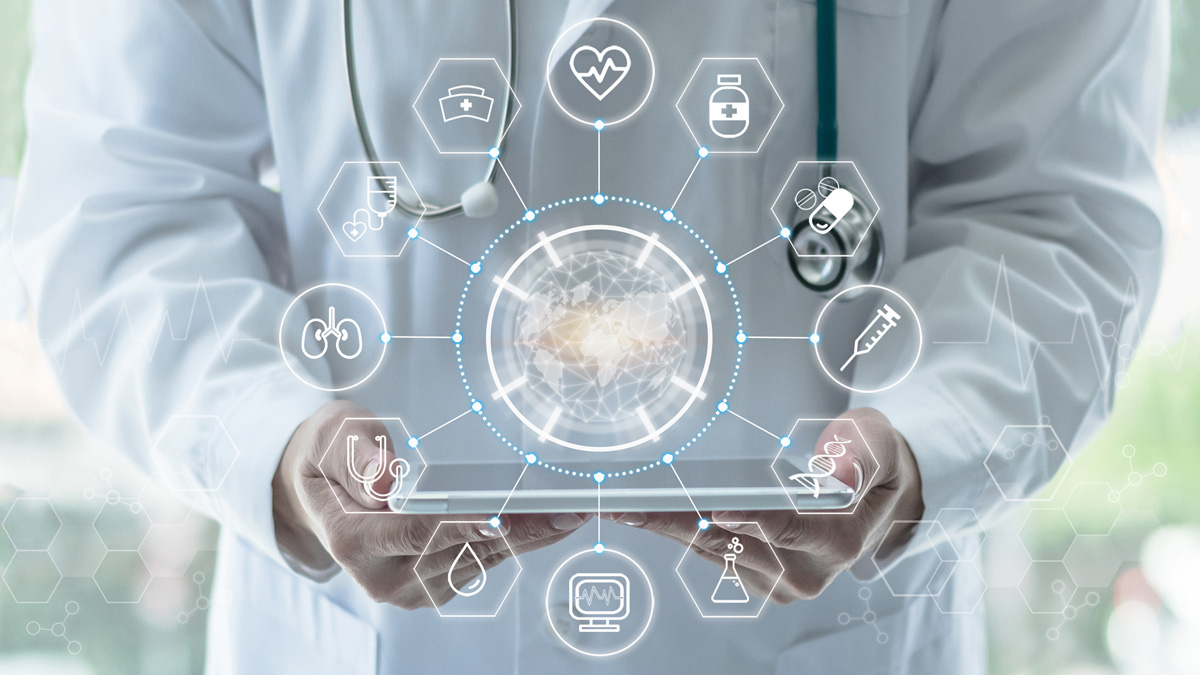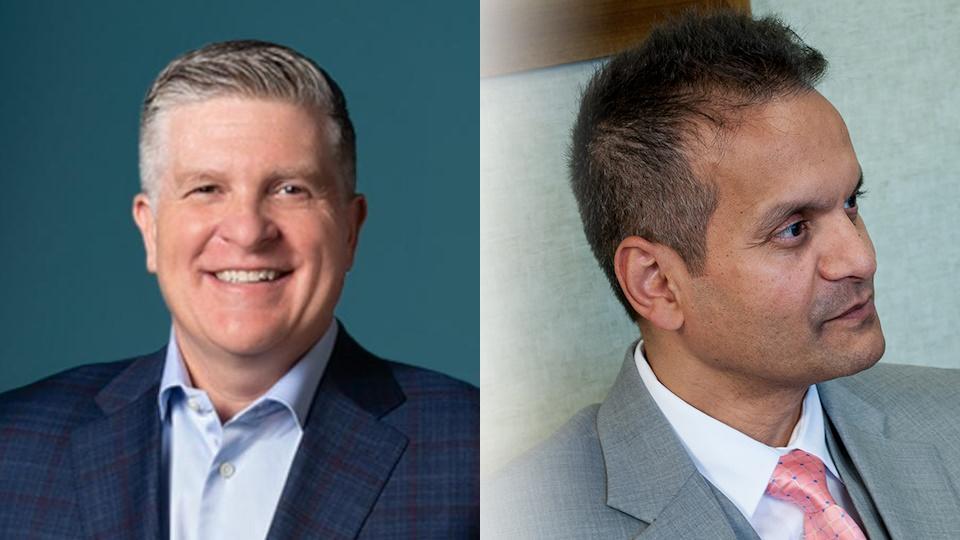USAID on expanding digital health globally – part two

This article follows part one of our two-part series, in which we discussed how USAID invests in digital infrastructure as part of its development and humanitarian assistance programmes.
Adele Waugaman, senior digital health coordinator of the COVID-19 response at the United States Agency for International Development (USAID), discusses the value of establishing donor partnerships and how those collaborations can improve digital health options globally.
Funders' investments can boost healthcare efficiency and effectiveness when benefactors are fully informed about the healthcare systems in which they strive to make a change. But aligning donors' investments and remaining aware of the everchanging healthcare landscape can be difficult.
"USAID has always been conscious of being part of a broader mosaic of actors that have a lot of value to add to the development work we contribute to. There are many roles for partners alongside our work," Waugaman states.
Alliances have proven to be significant catalysts for change in regions of the world where digital health is either needed or in need of expansion.
Collaborative results
USAID focused on bringing donors across funding organisations together to take a coordinated approach to meeting individual health needs during the pandemic, and to invest in existing digital solutions.
"Several global health funders gathered together in a meeting to identify some of the most important lessons we learned from Ebola and beyond and articulate these lessons as things that global health funders should do, in some cases should do differently, or should do more of," Waugaman states.
That meeting garnered the Digital Investment Principles, which provide a framework for donors to align their investments to a country's digital health strategies.
This alignment allows funders to pursue an integrated approach to strengthen countries' healthcare systems, enhance quality healthcare services, and improve data for better health outcomes.
"We're able to respond urgently and sometimes more quickly because we can leverage the scale, training and workflows already in place around existing digital infrastructure and make investments in systems that will endure beyond the emergency phase of the pandemic," Waugaman states.
Partnerships, co-investment strategies, and investment principles are vital to improving digital health infrastructure within countries, but digital connectivity and electrification are necessary for the options even to exist.
"We've seen a sharp rise in Internet use by 20% within least developed countries, according to ITU statistics, but we know that digital connectivity is not yet everywhere," Waugaman states.
In response, a partnership called Digital Invest was launched, a blended finance programme that mobilises $335 million in private capital, with $3.5 million of US government funding, specifically for digital connectivity infrastructure and digital financial services.
However, expanding digital connectivity can be a moot point if electrification is an issue in a region seeking digital health solutions.
"Where you don't have reliable electricity, it's very difficult to offer reliable digital connectivity," Waugaman says.
In response to the need for expanded electrification in Africa, USAID's Power Africa Healthcare Electrification and Telecommunications Alliance bring together more than 20 private sector partners providing solar and digital connectivity to off-grid health clinics in Africa.
Strong partnerships are beneficial in countries where increased healthcare options are necessary for improving the health of low- to middle-income populations.
Still, to ensure harmonious digital health implementation, there's a much-needed effort to standardise how all stakeholders take stock of where individual countries are in their digital health transformation journey.
Projects underway
There are relatively nascent tools, such as the Global Digital Health Index, that work in low-, middle- and high-income countries to create a standardised approach to the way one can define and assess where a country is in its digital health transformation journey.
Those using the Global Digital Health Index can retain a picture of the quality and reach of digital connectivity within a particular country and measure that impact over time.
"If that resource is widely available, we as the global health funding community can use that data to directly inform what we're trying to accomplish within an individual programme or funded activity," Waugaman states.
"Where countries are matters because that reflects the strength of the ecosystem in which these tools are used. We need to be precise about understanding that maturity journey, that journey along the digital health transformation continuum, to be strategic with our investments."
Another endeavour in its early days is a common repository called Digital Health Atlas, established by the World Health Organization with USAID's support, which provides information about digital systems in use within a country.
"It's designed so that if a member of a country government, a funder, or a development partner doing digital health work wants to see what's already being done in a country, they have a place to find out what systems are operating at some degree of national scale," Waugaman states.
Although the critical early steps have been taken to establish these platforms, the global health community still needs to strengthen and incorporate them into its planning or procurements, activity management, and project design.
USAID aimed to help by supporting a project called Map & Match, which looked at which digital systems were in use globally that had relevance to various aspects of the COVID-19 response, such as a vaccination system, a supply chain or logistics management system, et cetera.
USAID then aided in identifying, within a subset of countries in which it works, which systems were in use within a country and whether those countries would require additional work on the software available to adapt its use for the COVID-19 response.
Map & Match was made available as a global good so that all countries, funders, and development partners could access the data and utilise it. That data, in turn, was also provided to the Digital Health Atlas.
"We hope that as part of how donors track their health sector digital investments, there will be a way for that information to be recorded into the Atlas so it can remain fresh and complete as time goes on," Waugaman states.
Pharma’s role
Pharma can help improve these systems and others by lending their innovation and insight to government organisations.
"Pharmaceutical suppliers and distributors are key health system stakeholders that can offer high value in dialogues about leveraging and expanding the use of digital tools," Waugaman states.
"Because many of these actors are in the private sector, they're often well ahead in thinking about innovative solutions and can offer value in sharing consumer behavioural insights that otherwise might be difficult for other partners to access."
Pharma also has existing communications channels and relationships with health providers and consumers, and digital health tools play a critical role in facilitating and maintaining those relationships.
"The pharma industry already has quite robust information that could be useful to plug into this broader ecosystem assessment and planning work," Waugaman states.
The industry also has relationships with key interlocutors, such as pharmacists and private providers, who play a critical role in delivering pharmaceutical care in many countries where USAID works.
"Pharmaceutical companies have sophisticated distribution mechanisms that include digital solutions, like barcodes, that can create greater visibility on product delivery and product demand. That can help inform efficiency in best understanding what pharmaceutical commodities are in demand. These solutions may also be relevant for government-supported supply chains," Waugaman states.
An example is manufacturers moving toward the GS1 standard, which, once adopted broadly, will help with the global traceability of pharmaceutical commodities.
"COVID-19 has served as a good reminder of the importance of being able to verify and authenticate commodities as part of their distribution. Moving toward that GS1 standard will help in that effort, which is of course of interest to the pharmaceutical industry and the consumers of these pharmaceuticals who want to have confidence that the commodity they have received is authentic," Waugaman states.
"Those are just some of the ways in which we could deepen the already robust engagement with the pharmaceutical industry and some of the trends that we're seeing as part of that existing dialogue."
About the interviewee
Adele is senior digital health advisor at USAID’s Bureau for Global Health, seated in the Center for Innovation and Impact (CII). Currently she advises the agency’s COVID-19 response informed by the priorities of the USAID Vision for Action in Digital Health, the Agency’s first dedicated policy guidance related to investments in digital technologies and data systems that support country-based health programmes. She has authored and edited reports on trends at the intersection of digital technologies and international development, including Fighting Ebola with Information: Learning from the Use of Data, Information, and Digital Technologies in the West African Ebola Outbreak Response, and Disaster Relief 2.0: The Future of Information-Sharing in Humanitarian Emergencies.
About the author
 Jessica Hagen is a freelance life sciences and health writer and project manager who has worked with medical extended reality (XR) companies, fiction/nonfiction authors, nonprofit and for-profit organisations and government entities.
Jessica Hagen is a freelance life sciences and health writer and project manager who has worked with medical extended reality (XR) companies, fiction/nonfiction authors, nonprofit and for-profit organisations and government entities.












